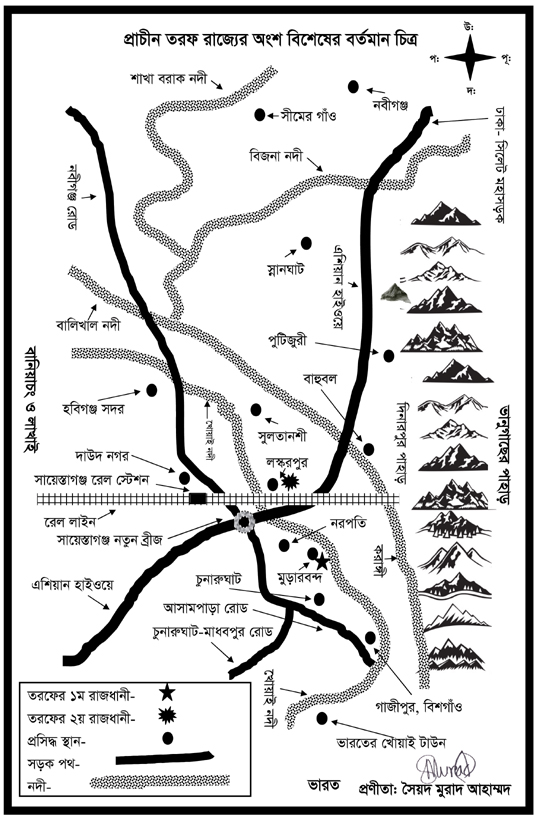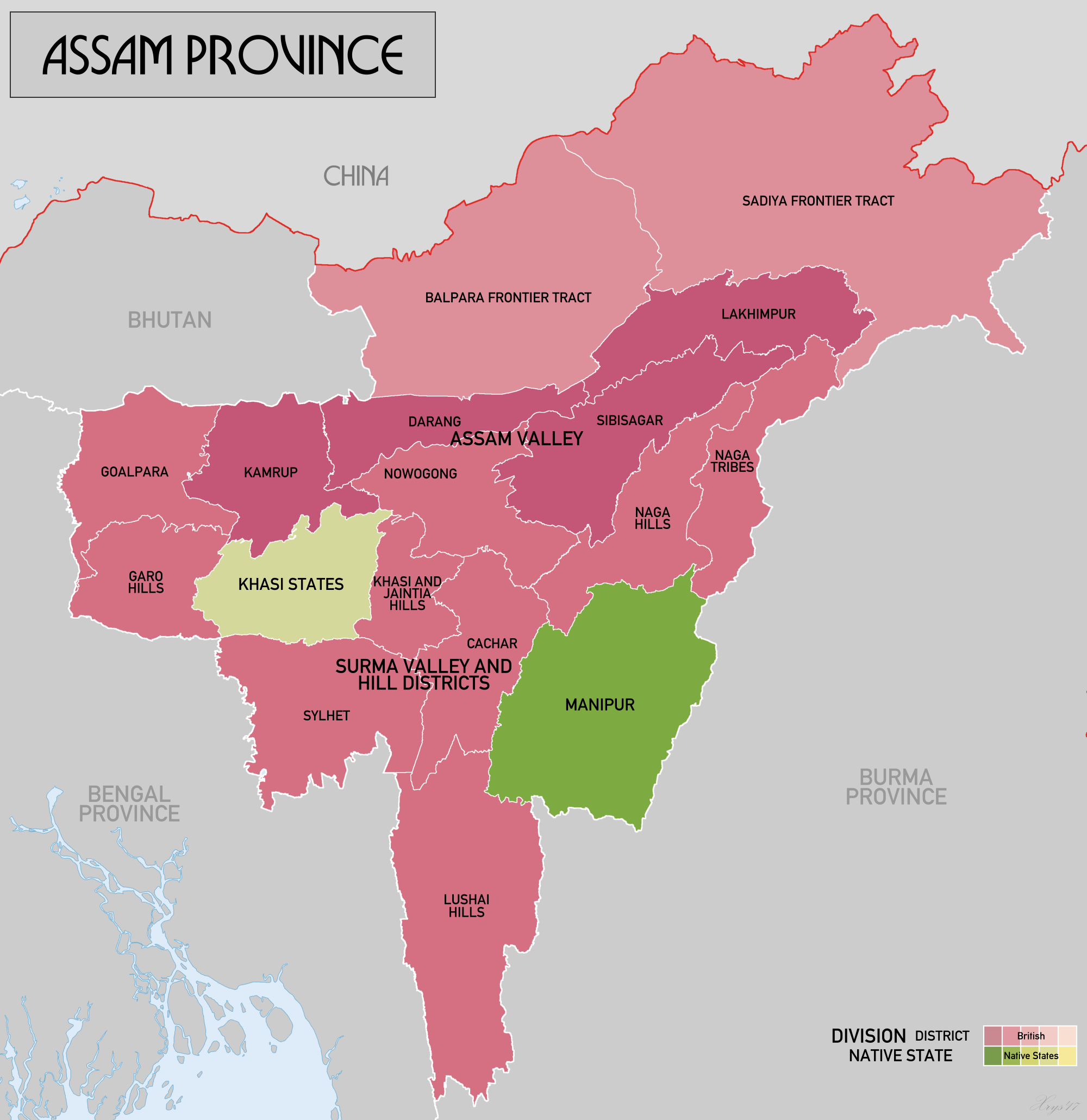|
Amu Road Railway Station
Amu Road railway station is a railway station in Bangladesh. There are two types of rail lines in Bangladesh: Meter gauge and Broad gauge. This station is connected with meter-gauge link on both sides from Habiganj Bazar–Shaistaganj–Balla line and Akhaura-Kulaura-Chhatak Line by Shaistaganj Junction. This railway station is situated in Habiganj Habiganj ( bn, হবিগঞ্জ) is a major town and district headquarters of Habiganj District in the division of Sylhet, Bangladesh. Population: Total population of Habiganj is about 95,000 Railroad * Habiganj Bazar–Shaistaganj–B ... city. References {{coord missing, Bangladesh Railway stations in Sylhet Division Former railway stations in Bangladesh ... [...More Info...] [...Related Items...] OR: [Wikipedia] [Google] [Baidu] |
Railway Station
Rail transport (also known as train transport) is a means of transport that transfers passengers and goods on wheeled vehicles running on rails, which are incorporated in Track (rail transport), tracks. In contrast to road transport, where the vehicles run on a prepared flat surface, rail vehicles (rolling stock) are directionally guided by the tracks on which they run. Tracks usually consist of steel rails, installed on Railroad tie, sleepers (ties) set in track ballast, ballast, on which the rolling stock, usually fitted with metal wheels, moves. Other variations are also possible, such as "slab track", in which the rails are fastened to a concrete foundation resting on a prepared subsurface. Rolling stock in a rail transport system generally encounters lower friction, frictional resistance than rubber-tyred road vehicles, so passenger and freight cars (carriages and wagons) can be coupled into longer trains. The rail transport operations, operation is carried out by a ... [...More Info...] [...Related Items...] OR: [Wikipedia] [Google] [Baidu] |
Bangladesh Railway
Bangladesh Railway ( bn, বাংলাদেশ রেলওয়ে) is the state-owned rail transport agency of Bangladesh. It operates and maintains all railways in the country, and is overseen by the Directorate General of Bangladesh Railway. The Bangladesh Railway is governed by the Ministry of Railways and the Bangladesh Railway Authority. Its reporting mark is "BR". The Bangladesh Railway system has a total length of In 2009, Bangladesh Railway had 34,168 employees. In 2014, Bangladesh Railway carried 65 million passengers and 2.52 million tonnes of freight. The railway made 8,135 million passenger-kilometres and 677 million tonne-kilometres. History Rail transport in Bangladesh (the then British India) began on 15 November 1862, when 53.11 km of (broad gauge) line was opened between Darshana in Chuadanga District and Jogotee in Kushtia District. On 1 January 1871, extension of Darshana - Jogotee Railway line up to Goalanda by Eastern Bengal Railway. On 4 ... [...More Info...] [...Related Items...] OR: [Wikipedia] [Google] [Baidu] |
Chunarughat Upazila
Chunarughat ( bn, চুনারুঘাট) is an Upazila of Habiganj District in the Division of Sylhet, Bangladesh. Geography Chunarughat is located at . It has 43660 households and total area 495.52 km2. History Rajapur (Tekarghat) in Chunarughat was the capital of the Hindu kingdom of Tungachal. Raja Achak Narayan was its final Hindu ruler who was defeated in the Capture of Taraf in 1304. Tungachal was renamed Taraf and its first Muslim ruler was Syed Nasiruddin, who is buried in the famous Murarband Dargah Sharif. Syed Shah Israil wrote the Persian book ''Ma'dan al-Fawaid'' in 1534, is considered to be Sylhet's first author. The Battle of Jilkua took place in Chunarughat in 1581 between the Taraf and Twipra kingdoms. The Khowai River was the only mode of transport and communication with other places. A ghat was situated in the river's western bank in the Borail mauza. A famous lime (known as ''chun'' in Bengali) trader had a business at the ghat which was famed ... [...More Info...] [...Related Items...] OR: [Wikipedia] [Google] [Baidu] |
Habiganj District
Habiganj ( bn, হবিগঞ্জ, Hobigonj), formerly known as Habibganj ( bn, হবিবগঞ্জ, Hobibgonj), is a district in north-eastern Bangladesh, located in the Sylhet Division. It was established as a district in 1984 as a successor to its ''subdivision'' status since 1867. It is named after its headquarters, the town of Habiganj. History Ancient Prehistoric settlements were said to have been discovered in the Chaklapunji tea garden, near Chandirmazar of Chunarughat. Habiganj has also revealed a significant number of prehistoric tools from the bed of Balu Stream, a small ephemeral stream (water remains here only for a few hours after rainfall). Angularity and freshness of the fossil wood artifacts suggest that they did not come from a great distance and probably came from nearby hillocks. Typologically, technologically, and morphometrically, the artifacts are more or less the same as those found in the Lalmai, Comilla. The fossil wood assemblages of both of ... [...More Info...] [...Related Items...] OR: [Wikipedia] [Google] [Baidu] |
Sylhet Division
Sylhet Division ( bn, সিলেট বিভাগ) is the northeastern division of Bangladesh. It is bordered by the Indian states of Meghalaya, Assam and Tripura to the north, east and south respectively, and by the Bangladeshi divisions of Chittagong to the southwest and Dhaka and Mymensingh to the west. Prior to 1947, it included the subdivision of Karimganj (presently in Barak Valley, India). However, Karimganj (including the thanas of Badarpur, Patharkandi and Ratabari) was inexplicably severed from Sylhet by the Radcliffe Boundary Commission. According to Niharranjan Ray, it was partly due to a plea from a delegation led by Abdul Matlib Mazumdar. Etymology and names The name ''Sylhet'' is an anglicisation of ''Shilhot'' (শিলহট). Its origins seem to come from the Sanskrit words শিলা ''śilā'' (meaning 'stone') and হট্ট ''haṭṭa'' (meaning 'marketplace'). These words match the landscape and topography of the hilly region. The shila st ... [...More Info...] [...Related Items...] OR: [Wikipedia] [Google] [Baidu] |
Bangladesh
Bangladesh (}, ), officially the People's Republic of Bangladesh, is a country in South Asia. It is the List of countries and dependencies by population, eighth-most populous country in the world, with a population exceeding 165 million people in an area of . Bangladesh is among the List of countries and dependencies by population density, most densely populated countries in the world, and shares land borders with India to the west, north, and east, and Myanmar to the southeast; to the south it has a coastline along the Bay of Bengal. It is narrowly separated from Bhutan and Nepal by the Siliguri Corridor; and from China by the Indian state of Sikkim in the north. Dhaka, the capital and list of cities and towns in Bangladesh, largest city, is the nation's political, financial and cultural centre. Chittagong, the second-largest city, is the busiest port on the Bay of Bengal. The official language is Bengali language, Bengali, one of the easternmost branches of the Indo-Europe ... [...More Info...] [...Related Items...] OR: [Wikipedia] [Google] [Baidu] |
Akhaura–Kulaura–Chhatak Line
The Akhaura–Kulaura–Chhatak line is a railway line connecting Akhaura and Chhatak, via Kulaura in Bangladesh. This line is under the jurisdiction of Bangladesh Railway History In response to the demands of the Assam tea planters for a railway link to Chittagong port, Assam Bengal Railway started construction of a railway track on the eastern side of Bengal in 1891. A track between Chittagong and Comilla was opened to traffic in 1895. The Comilla–Akhaura–Kulaura–Badarpur section was opened in 1896–98 and extended to Lumding by 1903. The Kulaura-Sylhet section was opened 1912–15, the Shaistaganj-Habiganj branch line in 1928, the Shaistaganj–Balla branch line in 1929 and the Sylhet–Chhatak Bazar line in 1954. A metre gauge link exists between Shahbajpur in Bangladesh and Mahisasan in India. Trains There are several direct trains between Dhaka and Sylhet, such as Parabot, Jointika and Upbon. The one-way journey takes a little over seven hours. There also ... [...More Info...] [...Related Items...] OR: [Wikipedia] [Google] [Baidu] |
Habiganj Bazar–Shaistaganj–Balla Line
The Habiganj Bazar–Shaistaganj–Balla line is a railway line connecting Akhaura and Chhatak, via Kulaura in Bangladesh. This line is under the jurisdiction of Bangladesh Railway. Shaistaganj Junction railway station is a junction station situated in Shayestaganj Upazila of Habiganj District in Bangladesh. It was opened in 1903 on Akhaura–Kulaura–Chhatak line. Then it became a junction station when Habiganj Bazar–Shaistaganj–Balla line railway was opened in 1928–29. But later in 2003, that line was abandoned as is closed in an unannounced manner and in 2005, the Habiganj Bazar–Shaistaganj line was taken off. Railroad Habiganj Bazar–Shaistaganj–Balla line During the colonial British rule, train services were started by rail at Habiganj Mahukuma in Sylhet district of the then (Undivided British-India) Assam province. In 1928, the British government built the Habiganj Bazar-Shaistaganj-Balla line as railway line and built infrastructure. The railway line wa ... [...More Info...] [...Related Items...] OR: [Wikipedia] [Google] [Baidu] |
Meter Gauge
Metre-gauge railways are narrow-gauge railways with track gauge of or 1 metre. The metre gauge is used in around of tracks around the world. It was used by European colonial powers, such as the French, British and German Empires. In Europe, large metre-gauge networks remain in use in Switzerland, Spain and many European towns with urban trams, but most metre-gauge local railways in France, Germany and Belgium Belgium, ; french: Belgique ; german: Belgien officially the Kingdom of Belgium, is a country in Northwestern Europe. The country is bordered by the Netherlands to the north, Germany to the east, Luxembourg to the southeast, France to ... closed down in the mid-20th century, although many still remain. With the revival of urban rail transport, metre-gauge light metros were established in some cities, and in other cities, metre gauge was replaced by standard gauge. The slightly-wider gauge is used in Sofia. Examples of metre-gauge See also * Itali ... [...More Info...] [...Related Items...] OR: [Wikipedia] [Google] [Baidu] |
Broad Gauge
A broad-gauge railway is a railway with a track gauge (the distance between the rails) broader than the used by standard-gauge railways. Broad gauge of , commonly known as Russian gauge, is the dominant track gauge in former Soviet Union (CIS states, Baltic states, Rail transport in Georgia (country), Georgia and Ukraine), Rail transport in Mongolia, Mongolia and Rail transport in Finland, Finland. Broad gauge of , commonly known as Irish Gauge, is the dominant track gauge in Ireland, and the Australian states of Rail transport in Victoria, Victoria and Railways in Adelaide, Adelaide. Broad gauge of , commonly known as Iberian gauge, is the dominant track gauge in Spain and Portugal. Broad gauge of , commonly known as Indian gauge, is the dominant track gauge in Indian Railways, India, Pakistan Railways, Pakistan, Bangladesh, Sri Lanka Railways, Sri Lanka, Rail transport in Argentina, Argentina, Empresa de los Ferrocarriles del Estado, Chile, and on Bay Area Rapid Transit, BAR ... [...More Info...] [...Related Items...] OR: [Wikipedia] [Google] [Baidu] |
Shaistaganj Junction Railway Station
Shaistaganj Junction railway station is a junction station situated in Shayestaganj Upazila of Habiganj District in Bangladesh. It was opened in 1903 on Akhaura–Kulaura–Chhatak line. Then it became a junction station when Habiganj Bazar–Shaistaganj–Balla line railway was opened in 1928–29. But later in 2003, that line was abandoned as is closed in an unannounced manner and in 2005, the Habiganj Bazar–Shaistaganj line was taken off. Railroad Habiganj Bazar–Shaistaganj–Balla line During the colonial British rule, train services were started by rail at Habiganj Mahukuma in Sylhet district of the then (Undivided British-India) Assam province. In 1928, the British government built the Habiganj Bazar-Shaistaganj-Balla line as railway line and built infrastructure. The railway line was opened by the Assam Bengal Railway by the then British government from Habiganj district headquarters town to Balla border via Shaistaganj junction, about 45 or 52 kilometers long ra ... [...More Info...] [...Related Items...] OR: [Wikipedia] [Google] [Baidu] |





